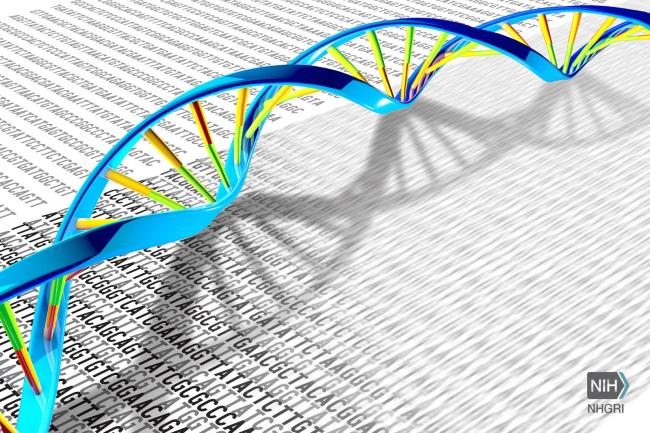Gene therapy for children born with rare immune disorder
May 25, 2021
Gene therapy for children born with rare immune disorder
At a Glance
-
Gene therapy restored immune system function to children with an inherited immune disorder with fewer side effects than existing therapies.
-
The therapy could be a safe and effective treatment for this rare and life-threatening condition.

Children born with a rare genetic disorder called severe combined immunodeficiency (SCID) cannot produce the immune cells that fight infections. Without treatment, they usually die from infections by age two.
One cause of SCID is a mutation in the gene for an enzyme called adenosine deaminase (ADA). Replacing the defective ADA with injections of the normal enzyme once or twice a week can treat the condition, but it doesn’t restore full immune function and must be taken for life. Patients also need to have periodic infusions of antibodies derived from human blood plasma. A more long-term treatment involves transplanting blood-forming stem cells from a healthy donor. Unfortunately, only about 20% of patients have compatible donors available.
A potential alternative to transplantation is gene therapy. This involves removing some of the patient’s own stem cells, adding a normal copy of the ADA gene, and then returning the modified cells to the patient. Highly engineered viruses, rendered harmless, are used to introduce the gene. But the type of virus used in previous gene therapy approaches led to serious side effects, including leukemia.
In a new study, a team led by Donald Kohn at the University of California, Los Angeles tested a different type of engineered virus, designed to reduce side effects, for introducing the gene. Researchers at NIH’s National Institute of Allergy and Infectious Diseases (NIAID) and National Human Genome Research Institute (NHGRI) participated in the research, and NIAID and NIH’s National Heart, Lung, and Blood Institute (NHLBI) provided financial support. The results appeared in the New England Journal of Medicine on May 11, 2021.
The researchers treated 50 patients with ADA-SCID in the United States and United Kingdom. The U.S. patients were followed for two years after treatment and the U.K. patients for three years. All patients survived through the end of the follow-up period. Only one U.S. patient and one U.K. patient had to resume enzyme-replacement therapy because the modified stem cells didn’t take hold. The ADA in the patients appeared to function effectively. Notably, all U.K. patients and 90% of U.S. patients were able to stop antibody-replacement therapy by the end of the studies.
Although some side effects occurred in all patients, most were mild to moderate. A low dose of chemotherapy was used to help the modified stem cells establish themselves. Most side effects could be attributed to this rather than the gene therapy itself. The researchers didn’t find any cases of the virus replicating in the patients. They also didn’t see excess immune cell proliferation that could lead to cancer. Nor were there any cases of the patient’s immune system attacking its own cells or the transplanted cells.
These results suggest that gene therapy could be a safe and effective treatment for ADA-SCID. Although the study size was small, the survival rates were higher than for stem cell transplantation. Ten of the U.S. patients were treated with cells that had been frozen and later thawed. Further trials of this cryopreservation procedure are now underway. If successful, it could increase access to treatment by allowing modified stem cells to be shipped to local hospitals.
“These findings suggest that this experimental gene therapy could serve as a potential treatment option for infants and older children with ADA-SCID,” says NIAID Director Dr. Anthony S. Fauci. “Importantly, gene therapy is a one-time procedure that offers patients the hope of developing a completely functional immune system and the chance to live a full, healthy life.”
—by Brian Doctrow, Ph.D.
Related Links
- Gene Therapy Reverses Rare Immune Disorder
- Therapy Repairs Ravaged Immune System
- About Severe Combined Immunodeficiency
- Severe Combined Immunodeficiency (SCID)
- Adenosine Deaminase Deficiency
- Genes and Gene Therapy
References
Autologous Ex Vivo Lentiviral Gene Therapy for Adenosine Deaminase Deficiency. Kohn DB, Booth C, Shaw KL, Xu-Bayford J, Garabedian E, Trevisan V, Carbonaro-Sarracino DA, Soni K, Terrazas D, Snell K, Ikeda A, Leon-Rico D, Moore TB, Buckland KF, Shah AJ, Gilmour KC, De Oliveira S, Rivat C, Crooks GM, Izotova N, Tse J, Adams S, Shupien S, Ricketts H, Davila A, Uzowuru C, Icreverzi A, Barman P, Campo Fernandez B, Hollis RP, Coronel M, Yu A, Chun KM, Casas CE, Zhang R, Arduini S, Lynn F, Kudari M, Spezzi A, Zahn M, Heimke R, Labik I, Parrott R, Buckley RH, Reeves L, Cornetta K, Sokolic R, Hershfield M, Schmidt M, Candotti F, Malech HL, Thrasher AJ, Gaspar HB. N Engl J Med. 2021 May 11. Doi: 10.1056/NEJMoa2027675. Online ahead of print. PMID: 33974366.
Funding
NIH’s National Institute of Allergy and Infectious Diseases (NIAID), National Heart, Lung and Blood Institute (NHLBI), and National Human Genome Research Institute (NHGRI); California Institute for Regenerative Medicine; Medical Research Council; National Institute for Health Research Great Ormond Street Hospital Biomedical Research Centre; Orchard Therapeutics (Europe); the Mahboubian family; Great Ormond Street Hospital Children’s Charity; Wellcome Trust.


